Does your skylight leak after a storm or make the room hot in the middle of the day?
That scene is common if you live in Brooklyn, NYC. Weather fluctuation can damage the skylight. Over time, seals become worn, frames move, and what should be a light source can soon turn into a problem.
This guide speaks to homeowners who want straight answers. You’ll see the 10 most common skylight problems in Brooklyn and the exact fix that works in each case. We cover a range of issues, including leaks, condensation, summer heat, drainage trouble, cracked glass, hail impact, glare, winter heat loss, noise, and drafts.
Stay with the full post. A few focused minutes now can keep your skylight dry, quiet, and efficient all year.
10 Most Common Skylight Problems and Solutions
Skylights brighten a room, yet they also add points where water, heat, and air can slip in or out. The most common skylight issues come from leaks, condensation, excess summer heat, drainage trouble, cracks, and worn seals. You can prevent most of these with the right glazing, careful flashing, and consistent maintenance.
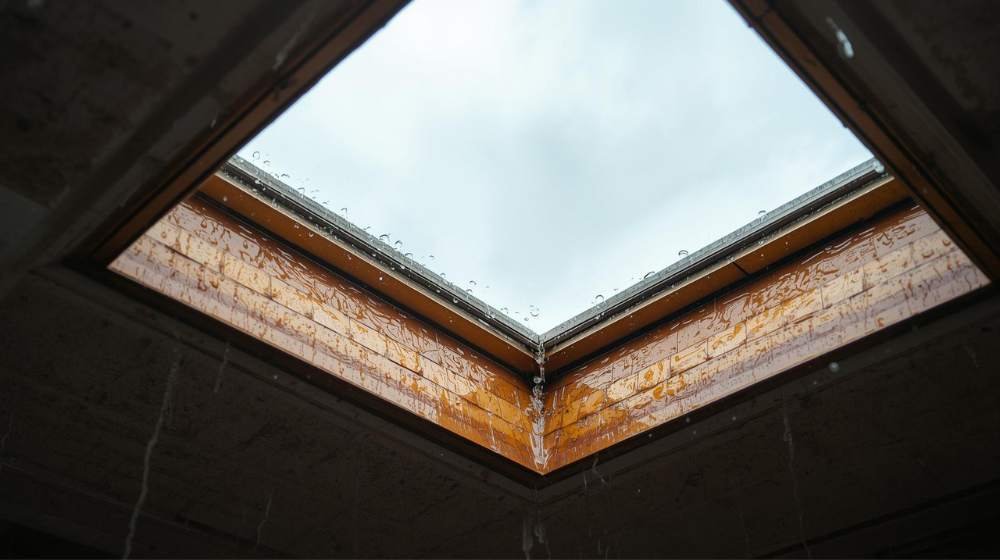
1. Skylight leaks
Leaks usually start when flashing fails or sealant dries out. Water finds tiny gaps at the curb or frame after wind-driven rain. The trash around the skylight drives water sideways into the seams. Older units fluctuate with temperature changes, which allows moisture in through small cracks.
Solutions
- Reflash the skylight with the manufacturer’s specific kit for your model.
- Add self-adhered ice-and-water membrane around the curb and under the roofing.
- Raise or rebuild a low curb so storm water cannot back up against the frame.
- Replace brittle gaskets or a worn unit when repairs no longer hold.
2. Condensation forming on a skylight
- Warm indoor air hits a cold glass surface and turns to water.
- High humidity from showers or cooking collects at the highest point in the room.
- A poorly insulated light stays cold and invites moisture.
- Single glazing or metal frames without a thermal break lose heat fast.
- Exhaust fans vent into an attic or shaft instead of outdoors and trap damp air.
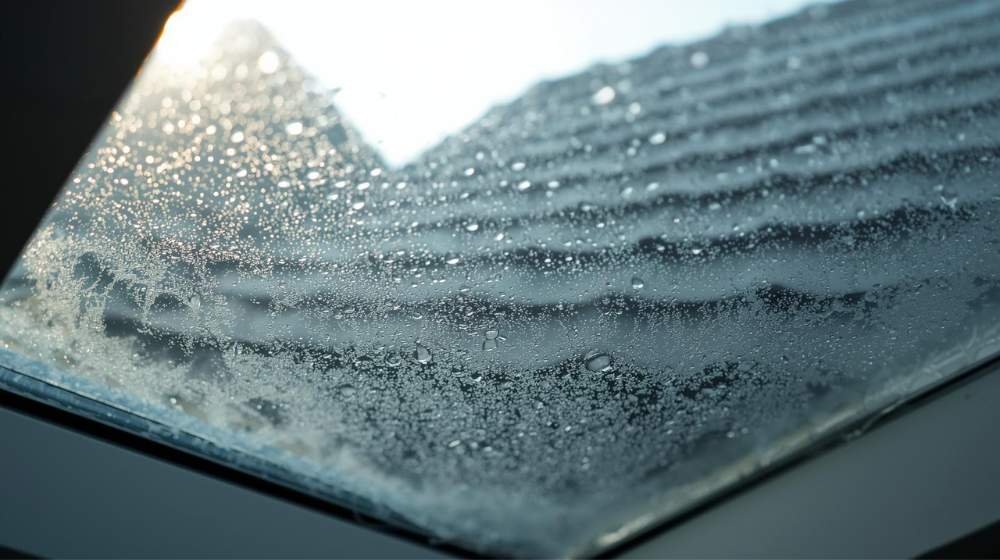
Solutions
Choose double or triple glazing with low-E coatings and a thermal break. Seal and insulate the light well like an exterior wall, then extend a continuous vapor barrier to the curb. Improve ventilation with exterior-vented fans or a venting skylight so moist air leaves the room.
3. Excessive heat buildup in summer.
Hot sun pours through clear glazing and raises indoor temperature. The strongest noontime rays come from the south and west. Dark roofs generate heat and warm the air near the skylight. Fixed units keep hot air at the ceiling level. The AC runs longer since the sun keeps adding heat.
Solutions
- Upgrade to low-solar-gain glass that blocks a large share of infrared energy.
- Add interior solar shades or an exterior awning sized for your model.
- Use a venting unit or openable sash so built-up heat can escape in the late day.
4. Drainage Issues
On flat roofs, water can sit near a skylight after rain. Water that sits pushes at seams and finds weak spots. Leaves and grit pile up on the high side of the curb and block the flow. Clogged roof drains or gutters send water toward the skylight. Poor roof slope moves runoff toward the curb instead of toward drains.
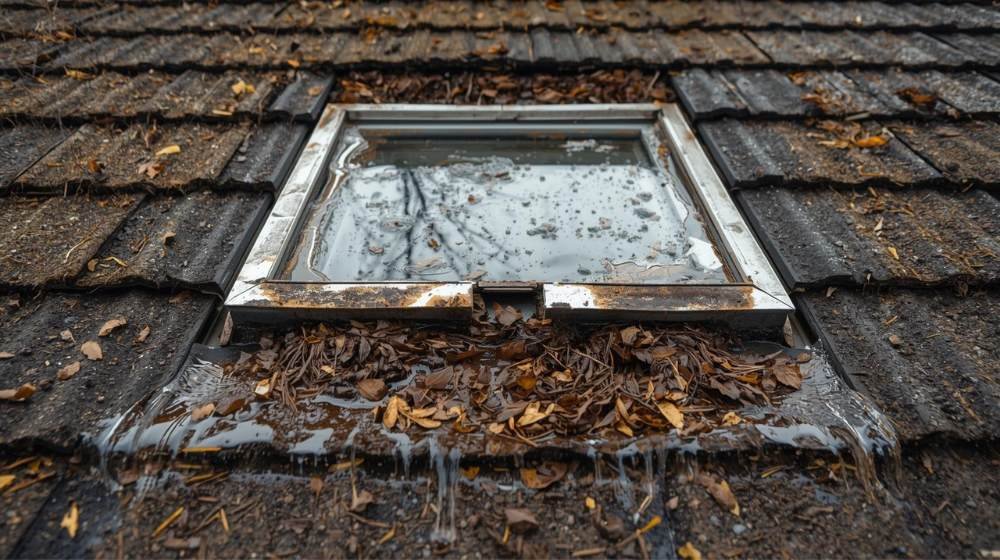
Solutions
Build a small ridge (cricket) on the high side to direct water around the skylight. Clean roof drains, gutters, and screens on a regular schedule. Use tapered insulation during reroofing so water runs to drains, not to the skylight.
5. Cracked or Broken
- Old plastic domes get brittle and crack after minor impacts.
- Fast temperature swings stress glass and start cracks.
- Hail or branches hit the lens and break weak spots.
- Loose screws allow the sash to flex and press against the glass.
- Foot traffic or tools chip the pane at the edge.
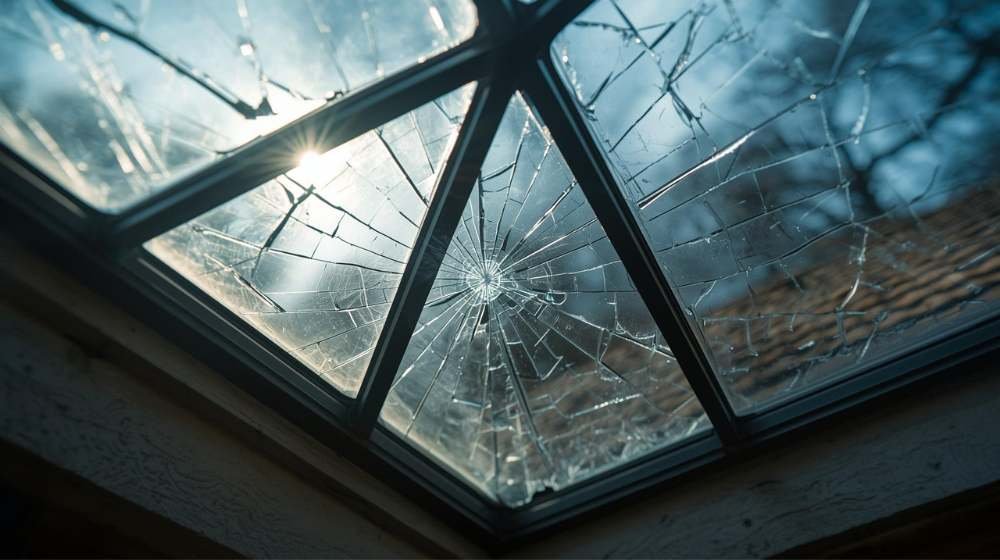
Solutions
Replace broken glass with laminated or tempered glass that will resist damage. Check the frame and hardware, then tighten or replace any parts that allow the frame to move. If the frame or curb is rotting or warping, you need to replace the whole skylight to fix it for optimum performance.
6. Hail Damage
Hailstones strike skylights at high speed. Old acrylic domes crack under impact. Large stones dent metal frames and loosen seals. Repeated hits stress the glass and start minor fractures. Once cracks open, rain finds a path into the ceiling.
Solutions
- Choose laminated or tempered, impact-rated glass for the replacement unit.
- Replace old acrylic domes with impact-resistant glass or thick polycarbonate.
- Inspect the flashing and sealant after each major storm and repair gaps at once.
- Photograph the damage for insurance and schedule a prompt replacement to prevent leaks.
7. Unwanted glare on screens or surfaces.
Direct sun reflects off the glass and washes out the screens. South and west exposures put bright light into the room in the afternoon. Clear glazing passes a high level of visible light. A shallow light shaft sends narrow beams onto desks and counters. White interiors bounce light and raise overall glare.
Solutions
- Add light-filtering or blackout shades sized to the skylight.
- Choose low-glare, low-E, or lightly tinted glazing at the next upgrade.
- Install a diffuser or prismatic lens to spread light evenly.
- Shift the screen position or change the shaft angle during a remodel.
8. Significant heat loss in winter.
Warm indoor air rises and meets a cold skylight surface. Single glass and metal frames lose heat fast. Gaps around the frame allow air to move. An uninsulated light well stays cold and pulls heat from the room. Night temperatures increase the difference and raise energy use.
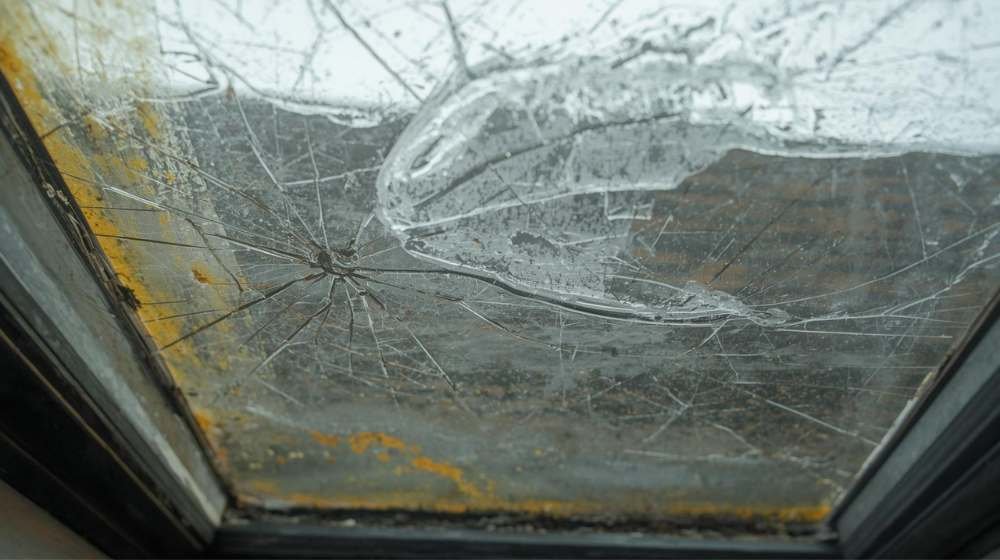
Solutions
- Upgrade to double or triple glazing with a low U-factor and warm-edge spacers.
- Air-seal the opening and insulate the light well with rigid foam or dense-pack.
- Close insulated shades at night to hold heat inside.
- Replace worn gaskets and weatherstripping to stop air movement.
9. Noise Issues
Rain hits thin glazing and sounds loud on top floors. Acrylic domes drum more than laminated glass. Traffic and sirens enter through weak seals and vents. A tall, hollow light well echoes sound. Wind pushes on loose sashes and creates a whistle.
Solutions
- Choose laminated glass to cut impact and street noise.
- Add insulated or cellular shades to absorb sound.
- Line the light well with sound-damping drywall and seal all joints.
- Tighten hardware and replace gaskets to stop whistles at the edges.
10. Drafts and Poor Sealing
Old gaskets harden and no longer seal. Hardware loosens and leaves small gaps at the sash. The rough opening has voids that let air pass into the room. A warped frame pulls out of the square and breaks the seal. Wind creates pressure differences that pull air through every gap.
Solutions
- Replace weatherstripping and gaskets, then adjust the latch and hinges.
- Foam and caulk the rough opening and the interior trim for a tight seal.
- Shim, square, or replace a warped unit when adjustment cannot fix the fit.
- Verify results with a simple smoke test or an infrared scan.
What do you need to know about getting a skylight?
Start with the roof type and slope, as these determine the right skylight style and curb height. Pick quality glass with low-E coating and, if possible, laminated inner panes for safety and comfort. Plan for proper flashing and drainage so rain cannot sit against the frame. In many cities, a permit is required, so confirm the rules and hire a licensed installer who follows the manufacturer’s instructions.
Here are more detailed techniques and product recommendations to avoid common skylight problems.
A good skylight needs the right parts and the correct details. The products below pair with simple techniques that stop leaks, cut heat gain and loss, and keep your rooms comfortable.
- Low-E double or triple glazing with warm-edge spacers: This glass cuts heat loss in winter and limits solar gain in summer. The warm-edge spacer lowers condensation at the glass edge. A laminated inner pane also improves safety and reduces noise.
- Factory flashing kit plus self-adhered ice-and-water membrane: Use the flashing kit made for your exact skylight model for a tight, repeatable seal. Run the membrane up the curb and out onto the roof so water cannot reach the wood. This combo prevents the small gaps that usually start leaks.
- Proper curb height with a cricket and tapered insulation: A curb that sits high enough keeps storm water away from the frame on low-slope roofs. A small “cricket” on the high side splits and flows around the skylight. Tapered insulation guides water to drains instead of toward the curb.
- Air-sealed and insulated light well (rigid foam + continuous vapor barrier): Treat the shaft like an exterior wall with sealed seams and tight corners. Rigid foam or dense-pack insulation keeps surfaces warm and stops drafts. A continuous vapor barrier from the room to the curb blocks indoor moisture from reaching cold areas.
- Sun and glare control (solar shades, low-SHGC glass, diffusers): Solar shades cut brightness and help the room stay cooler. Low-SHGC glass trims harsh afternoon sun on south and west exposures. A prismatic diffuser spreads light so screens and counters avoid hot spots.
- Vented skylight with rain sensor and simple controls: A vented unit lets hot air escape from the top floor on summer afternoons. A built-in rain sensor closes the window before a storm, so you avoid surprises. Remote or solar controls remove wiring hassles and make daily use easy.
Why should you choose a professional roofing contractor?
Are you looking for an expert roofing contractor in Brooklyn, NYC? SR General Construction has you covered! Our business is located at 8807 Avenue B, Brooklyn, NY 11236, United States, in the Canarsie area.
We proudly serve all areas of Brooklyn with high-quality, durable roofing solutions. From new installations to repairs and maintenance, we provide the best service at affordable prices. Contact us and experience why we’re Brooklyn’s roofing experts!
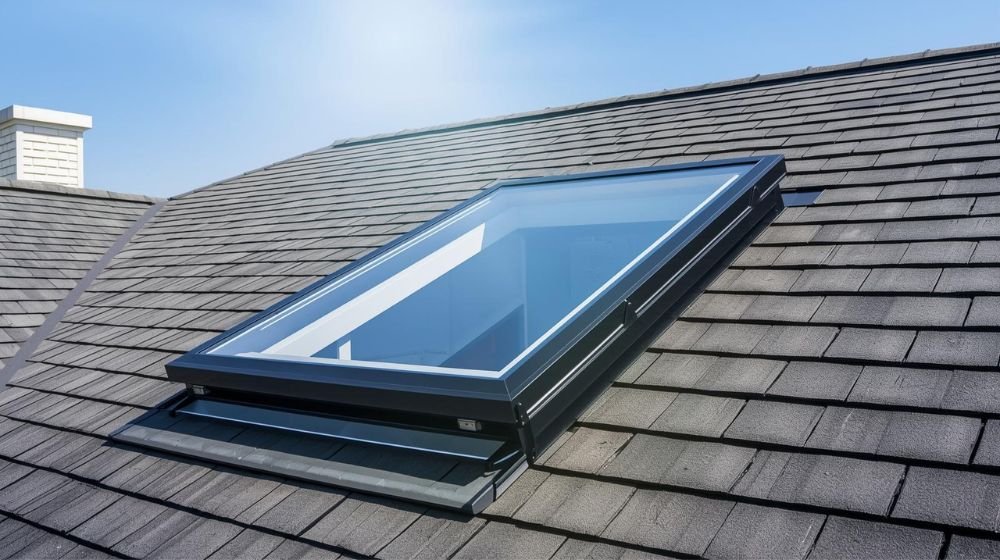
FAQ
1. Do skylights always leak?
No. Modern units installed with the correct flashing and underlayment don’t inherently leak, and brands like VELUX even back “No Leak” installations with written warranties. Proper detailing is what makes the difference.
2. What’s the typical lifespan of a skylight?
Most residential skylights last about 15–20 years, shorter if flashing or seals fail early. Glass and product warranties hint at expected durability, but age, UV, and weather exposure matter.
3. Do I need a permit to install or replace a skylight in NYC?
In NYC, most construction work requires a Department of Buildings permit; skylight installations alter the roof and generally fall under this rule. Check 1 RCNY §101-14 for limited exemptions and use DOB NOW for filings.
4. Can I install a skylight on a flat roof?
Yes. Use curb-mounted models and give the unit a slight pitch so water sheds. Manufacturers specify minimum slopes (e.g., deck-mounted often needs ≥3:12; curb-mounted can go on 0° with proper curb).
5. How do I stop a skylight from overheating my room in summer?
Pick low-SHGC/low-E glazing, add a shade, and ventilate high heat with a vented unit where appropriate. Orientation also matters—south/west exposures bring more solar gain.
6. What roof pitch do I need for a skylight?
Typical deck-mounted units require a minimum pitch (e.g., about 3:12/14°), while curb-mounted models are designed for very low slopes—even flat roofs—when built on a proper curb. Always follow the specific product’s pitch table.
